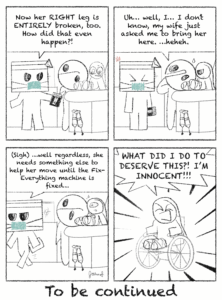Dr. David Walsh has taught art history and architecture at UR for the past 30 years, and currently researches and recreates medieval monasteries.
Professor and Department Chair of Art and Art History Paul Duro admires Walsh’s work. “His work is distinguished by its thoroughness, careful attention to detail and respect for the historical process,” he said.
Walsh’s research has taken him to France, England, Yugoslavia and Southern Italy, where he completed his doctoral dissertation on 12th century bronze doors. From his travels he has learned that “you can’t take too much language.” He knows nine.
His current research projects focus on recreating the interiors of two Romanesque Medieval monasteries ?Bordesley Abbey in England and a monastic church at Cluny in France.
The monastery at Cluny was the largest pre-Renaissance church in western Christendom, but most of it was destroyed in the French Revolution.
“One specialty I have is reconstructing church furniture because my philosophy is that we have all these churches, but we don’t have what was inside them. A 12th century monk was more interested in his choir stalls and his altars and where people were buried than he would have been with the architectural shell,” Walsh said.
Taking numerous excavated fragments, Walsh arranges the pieces into their original context.
At Cluny, he has reconstructed the elaborate screen from around the choir and a friend has reconstructed portions of the choir floor. “We’re literally, on paper, rebuilding the largest and most important choir of the Middle Ages,” he said.
Walsh finds this Romance sculpture the most visually exciting medium.
“We have something between 6,000 and 8,000 fragments from different kinds of things?parts of altars, tombs, screens and undefined furniture,” he said.
Walsh catalogues each fragment, drawing and photographing each piece. In the first of a four volume series to be written in French, about 2,000 of these fragments will be published. He will return to France this summer to continue this reconstruction.
“One of the things I found most interesting when I was working on the excavation [at Cluny] was the transmission of measurements and proportional systems in the Middle Ages,” he said.
Today two known plans exist from the Middle Ages, one of a ninth century monastery that was never actually built, and another of the waterworks at the 12th century Canterbury Cathedral.
“You have these enormous buildings that are so complicated and they didn’t have any engineering theory ? they made them by trial and error. They built very daring structures which we now spend lots of time trying to analyze and figure out how they did it,” he said.
“It isn’t until the 14th and 15th centuries that you get a lot of plans, secrets of masons and manuscripts which show diagrams of how to do things. A lot of that was kept fairly secret for a while because that information was kept within a kind of guild/secret society that you were initiated into.”
When he is not researching, Walsh draws and paints. “I love painting architecture, and not just famous buildings either. I love spaces and the way light falls on them, textures and the way they are created,” he said.
While his research focuses mostly on medieval architecture, he also loves modern architecture.
His work has been exhibited locally at the Oxford Gallery and in other galleries. Walsh has another exhibit coming out next year at the Oxford Gallery.
“While I call myself an art historian, I do all kinds of things,” he said.
Walsh enjoys UR’s scientific atmosphere because of his deep interest in archaeology and architecture. “I like numbers, I like things that have to do with science. I wanted to be an engineer. I teach architecture so it’s a natural for me?I’m not the typical idea of a humanist who is totally separate,” he said.
Walsh amazes fellow colleagues with his vast knowledge. “What impresses me so much about David Walsh is the wide-ranging nature of his knowledge?everything from late 19th century architecture and the arts and craft movement, to medieval architecture and monasticism, to the history of archaeology,” Susan B. Anthony Professor of Gender and Women’s Studies and Professor of Art History Janet Catherine Berlo said.
“He is very well-read, and well-traveled, and has thought deeply about many issues having to do with history and archaeology.”
Ferrara can be reached at aferrara@campustimes.org.

